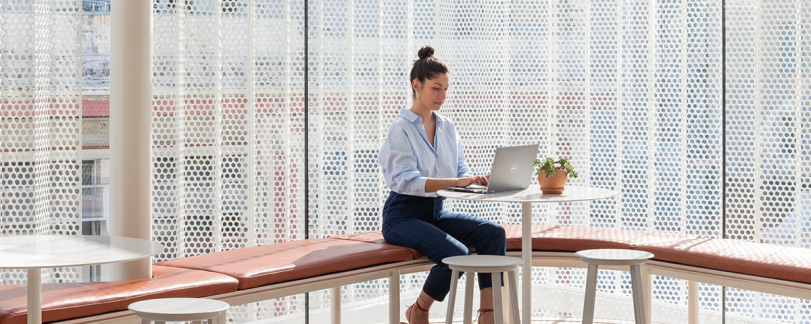Nowadays most of our time is spent indoors, so it’s vital to check the quality of our indoor environments. The importance of proper ventilation in support of indoor air quality (IAQ), for example, cannot be overstated in assessing the spaces we inhabit. Existing research suggests that poor ventilation may lead to increased indoor CO₂ levels that can cause cognitive function scores to drop significantly, and may be a key cause of tiredness, concentration problems, and even ill-health.
Air changes per hour, humidity, temperature, ventilation, and other contaminants are among some of the many variables that have been studied in the past to determine IAQ.¹ It is well-known that various occupant-generated processes and material pollutants in the workplace contribute to air quality. Breathing by building occupants is the principal source of CO₂ in office buildings, and concentrations within them can range from 350 to 2500 parts per million.² ³
This research focused on the real-time monitoring of CO₂ levels in Hames Sharley’s new studio in Perth, Western Australia. Hames Sharley is committed to providing a quality workplace that optimises comfort, wellbeing, and productivity. This study provided the multidisciplinary design studio with the opportunity to assess the performance of its adaptive reuse building and its responsiveness to the dynamics of a hybrid agile workplace setting through real-time HVAC system sensor data.

Through good building and workplace design, and with well-considered, cost-effective and responsive systems, the study observed that CO₂ concentrations in the sampled air were able to be maintained well within acceptable ranges for IAQ set by the NCC and in ratio to performance, efficiency, and consumption.
Considering the centralised amenity and the opportunity to redesign and repurpose an underutilised asset into a bespoke space, this study provides a working example of an adaptive reuse development at the early stages of occupancy for consideration by those investing in the CBD retail mall. The study demonstrates value for money IAQ performance in alignment with an agile hybrid work setting which encourages movement and a dynamic working environment.
¹ Graudenz, G.S., Oliveira, C.H., Tribess, A., Mendes, C., Latorre, M.R.D.O. and Kalil, J. (2005). Association of air-conditioning with Respiratory Symptoms in Office Workers in Tropical Climate. Indoor Air, [online] 15(1), pp.62–66. Available at: https://pubmed.ncbi.nlm.nih.gov/15660569/ [Accessed 4 Aug. 2021].
² Seppanen, O.A., Fisk, W.J. and Mendell, M.J. (1999). Association of Ventilation Rates and CO2 Concentrations with Health and Other Responses in Commercial and Institutional Buildings. Indoor Air, 9(4), pp.226–252.
³ Seppanen, O., Fisk, W.J. and Lei, Q.H. (2006). Ventilation and Performance in Office Work. Indoor Air, [online] 16(1), pp.28–36. Available at: https://onlinelibrary.wiley.com/doi/abs/10.1111/j.1600-0668.2005.00394.x.
Download the full paper below.











